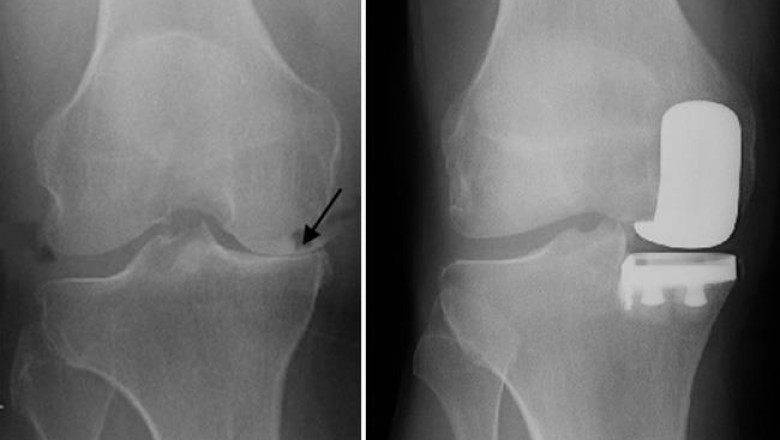views

Knee replacement surgery is the most common bone surgery. Every year, thousands of people undergo for a knee replacement somewhere in the corner of the world. The surgical treatment is recommended to people who are going through intense and persistent knee pain and the cushion like bone or cartilage between the femur and the knee is damaged. There are four types of surgical treatment for knees including total knee replacement, partial knee replacement, kneecap replacement, and revision knee replacement. Among all of them total knee replacement and partial knee replacement are popular options.
Partial Knee Replacement
A partial knee replacement is a treatment advised by the joint specialist after analysing the situation of the knee, your arthritis, and the damage. The foremost step includes conducting an x-ray of the knee site to know about the damage condition. If your damage is more at one compartment, you are an ideal candidate for the treatment. In other words, only a portion of the knee is resurfaced. Therefore, it is called an alternative to total knee replacement.
The sad thing is that many patients with knee pain and cartilage damage don’t consider the advice of their specialists and delay in their surgery when they are a good candidate for a partial knee replacement. The result is increase in pain and damage over time. Later, they have no option to undergo for a total knee replacement. Therefore, it is important to pay attention to your doctor’s advice.
Luckily, there are a range of treatment options available to choose from. Your doctor will discuss with you the best option for you to provide relieve your individual osteoarthritis symptoms.
Division of Knees
To best understand knee osteoarthritis, it is necessary to learn about the knee compartments. It is grouped into three major compartments- medial compartment, lateral compartment, and patellofemoral compartment. Advanced osteoarthritis is limited to a single compartment. Therefore, it needs only a partial knee replacement.
Treatment Procedure
The treatment procedure is not as complex as a total knee replacement has. During this treatment, the damaged compartment is replaced with a prosthetic that is made from metal or plastic. The surgery hours are not as long as for a total knee replacement. The aim of the surgery is to preserve the healthy cartilage and bone as well as the ligaments.
Advantages of Partial Knee Replacement
Multiple studies have found that the success rate of the surgery is higher. Most patients with a partial knee replacement surgery have found good results with the procedure. It improves their pain, walking style and quality of lives. Because of the preservation of the bone cartilage and ligaments in the healthy parts of the knee, most patients of the treatment experience more natural than a total knee replacement.
· The treatment offers quicker recovery from pain and gets back to the daily routine quickly.
· After treatment the stay in the hospital is lesser than the treatment in a total knee replacement.
· There is less blood loss and the surgical procedure ends quicker.
· There is a lower risk of infection and blood clots.
Consult the joint replacement surgeon to discuss your knee condition as soon as possible to avoid a total knee surgery.












